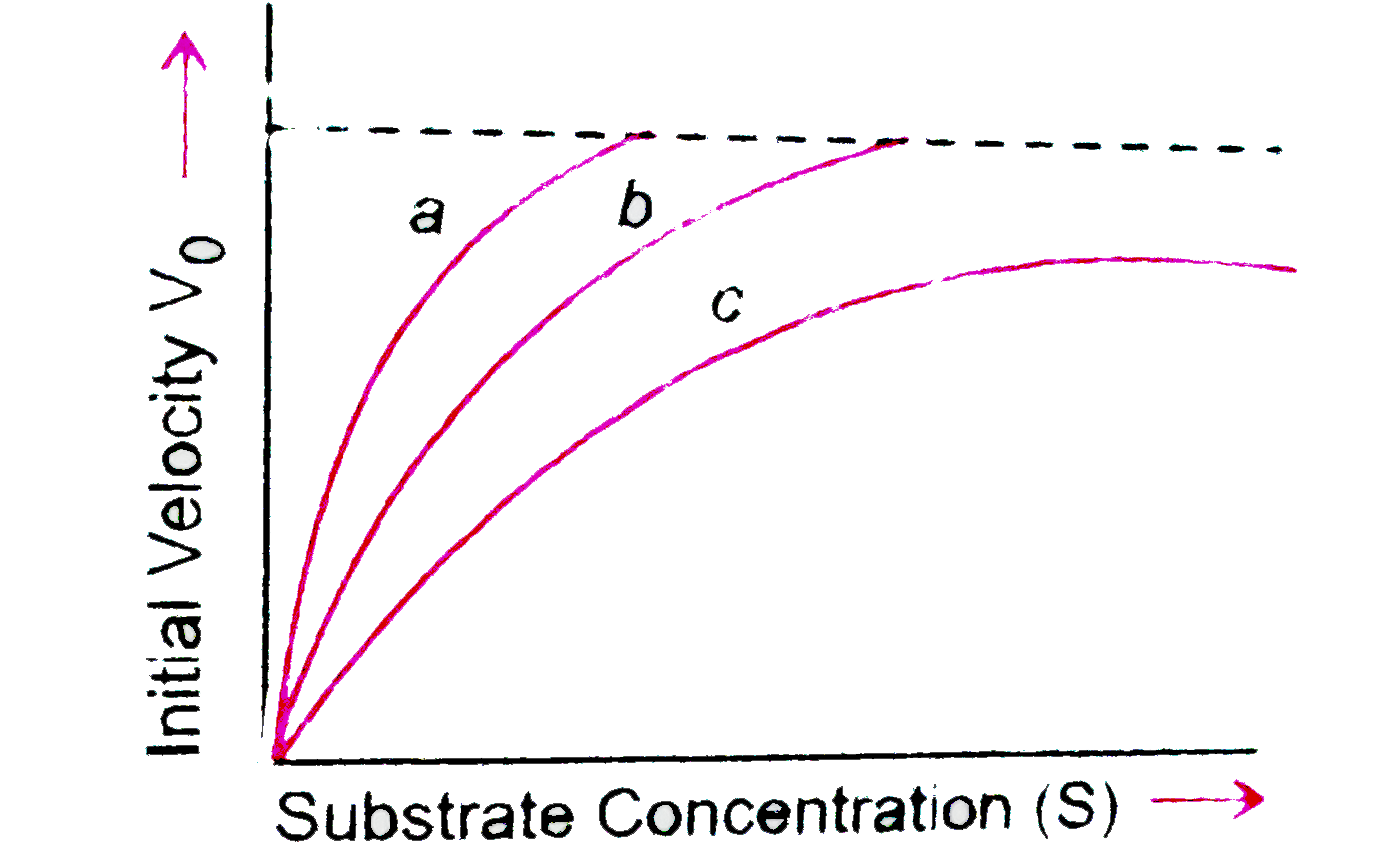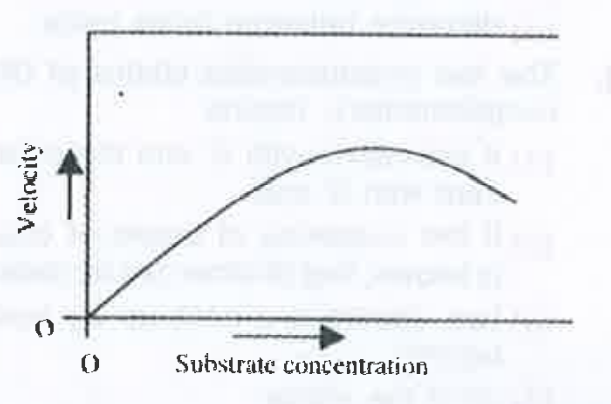If you study the effect of substrate concentration on an enzymatic reaction, what kind of curve would you obtain?
To determine the effect of substrate concentration on an enzymatic reaction, we can analyze the relationship between substrate concentration and the rate of reaction. Here’s a step-by-step breakdown of the process:
Step 1: Understand the Variables
- Substrate Concentration (X-axis): This is the amount of substrate available for the enzyme to act upon.
- Rate of Reaction (Y-axis): This measures how quickly the enzyme converts the substrate into product.
Step 2: Initial Increase in Reaction Rate
- As substrate concentration increases, the rate of reaction also increases. This is because more substrate molecules are available to bind to the enzyme, leading to more frequent enzyme-substrate complexes.
Step 3: Enzyme Saturation
- After a certain concentration of substrate, the enzymes become saturated. This means that all active sites of the enzyme molecules are occupied by substrate, and the enzyme cannot work any faster regardless of how much more substrate is added.
Step 4: Constant Rate of Reaction
- Once saturation is reached, even if substrate concentration continues to increase, the rate of reaction will plateau and remain constant. This is because the maximum number of enzyme-substrate complexes is formed, and the reaction rate is limited by the availability of the enzyme.
Step 5: Shape of the Curve
- The resulting graph will show a curve that initially rises steeply (indicating an increase in reaction rate with substrate concentration) and then levels off as it approaches a maximum rate. This creates a hyperbolic or arc-like shape.
Conclusion
- Therefore, the kind of curve you would obtain when studying the effect of substrate concentration on an enzymatic reaction is a hyperbolic curve, indicating an initial increase in rate followed by a plateau as the enzymes become saturated.
---
- Substrate Concentration (X-axis): This is the amount of substrate available for the enzyme to act upon.
- Rate of Reaction (Y-axis): This measures how quickly the enzyme converts the substrate into product.
- As substrate concentration increases, the rate of reaction also increases. This is because more substrate molecules are available to bind to the enzyme, leading to more frequent enzyme-substrate complexes.
- After a certain concentration of substrate, the enzymes become saturated. This means that all active sites of the enzyme molecules are occupied by substrate, and the enzyme cannot work any faster regardless of how much more substrate is added.
- Once saturation is reached, even if substrate concentration continues to increase, the rate of reaction will plateau and remain constant. This is because the maximum number of enzyme-substrate complexes is formed, and the reaction rate is limited by the availability of the enzyme.
- The resulting graph will show a curve that initially rises steeply (indicating an increase in reaction rate with substrate concentration) and then levels off as it approaches a maximum rate. This creates a hyperbolic or arc-like shape.
- Therefore, the kind of curve you would obtain when studying the effect of substrate concentration on an enzymatic reaction is a hyperbolic curve, indicating an initial increase in rate followed by a plateau as the enzymes become saturated.
Topper's Solved these Questions
- BOOK - ICSECHAPTER - BIOMOLECULESEXERCISE - TEST YOUR PROGRESS (SHORT/LONG ANSWER TYPE QUESTIONS)71videos
BIOMOLECULES
- BOOK - ICSECHAPTER - BIOMOLECULESEXERCISE - TEST YOUR PROGRESS (SHORT/LONG ANSWER TYPE QUESTIONS)1videos
BIOMOLECULES
- BOOK - ICSECHAPTER - BIOMOLECULESEXERCISE - TEST YOUR PROGRESS (MATCH THE ITEMS OF COLUMN A WITH THE ALTERNATIVE GIVEN.)2videos
BIOMOLECULES
- BOOK - ICSECHAPTER - BIOLOGY ISC SAMPLE QUESTION PAPER 2019EXERCISE - PART-II (SECTION -C)6videos
BIOLOGY ISC SAMPLE QUESTION PAPER 2019
- BOOK - ICSECHAPTER - BODY FLUIDS AND CIRCULATIONEXERCISE - DIFFRENTIATE BETWEEN13videos
BODY FLUIDS AND CIRCULATION
Similar Questions
With the increase is substrate concentration the rate of enzymatic activity increases
View SolutionThe Given figure shows three velocity-substrate concentration curves of an enzyme reaction. What do the curves X Y and Z depict respectively ?
 View Solution
View SolutionFigure given below shows three velocity-substrate concentration curves for an enzyme reaxtion. What do the curves for an enzyme reaction. What do the curves depict
 View Solution
View SolutionTransition state structure of the substrate formed during an enzymatic reaction is
View SolutionTransition state structure of the substrate formed during an enzymatic reaction is
View SolutionWhat does the graph indicate ?
The graph given below shows the effect of substrate concentration on the rate of reaction of the enzyme green- gram-phos-phatase.
 View Solution
View SolutionWhat do you mean by normal reaction?
View SolutionFollowing graphs show the effect of change in concentration of substrate on enzyme activity:


In which of the above curve,the enzyme shows maximum substrate affinityView SolutionWhat do you understand by chemical reaction ?
View SolutionState Ohm's law. Draw a labelled circuit diagram to verify this law in the laboratory. If you draw a graph between the potential difference and current flowing through a metallic conductor, what kind of curve will you get? Explain how would you use this graph to determine the resistance of the conductor.
View Solution
